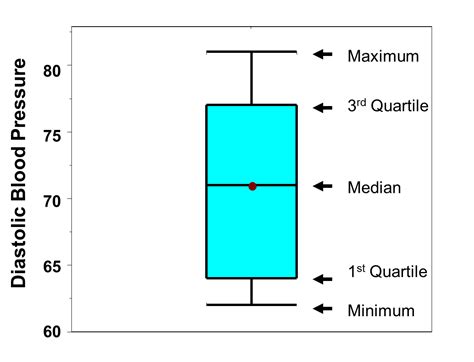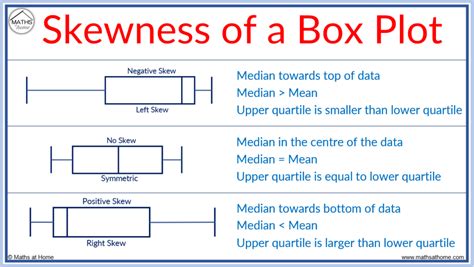describe the shape of the distribution box plot A box plot, also known as a box-and-whisker plot, is a graphical representation of the distribution of a dataset. It summarizes key statistics such as the median, quartiles, and outliers, providing insights into the spread and .
Yellow box markings must always have four straight sides, each being approximately transverse to the traffic flow on the approach. Up to 10% of the length of the side at any corner may be cut away as shown in the diagram to accommodate corner kerbs.
0 · symmetric box and whisker plot
1 · skewness on a box plot
2 · skewed box and whisker plot
3 · shape of distribution skewed right
4 · shape of distribution skewed left
5 · right skewed data box plot
6 · right skewed box plot vertical
7 · explain box plot with example
Five-axis machining is taking the machining world by storm, and for good reason. This type of manufacturing, in which computer numerical control is used to move cutting parts or tools along five different axes simultaneously, .
symmetric box and whisker plot
Distribution Shape; Central Value of it; Variability of it; A box plot is a chart that shows data from a five-number summary including one of the measures of central tendency. It does not show the distribution in particular as much as a stem .A box plot, sometimes called a box and whisker plot, provides a snapshot of your continuous variable’s distribution. They particularly excel at comparing the distributions of groups within your dataset.
Histograms and box plots can be quite useful in suggesting the shape of a probability distribution. Here, we'll concern ourselves with three possible shapes: symmetric, skewed left, or skewed .
diy cnc machine
A boxplot, also known as a box plot, box plots, or box-and-whisker plot, is a standardized way of displaying the distribution of a data set based on its five-number summary .Descriptive Statistics > Shapes of Distributions. What Defines Shapes of Distributions? When a data set is graphed, each point is arranged to produce one of dozens of different shapes. The distribution shape can give you a visual . A box plot, also known as a box-and-whisker plot, is a graphical representation of the distribution of a dataset. It summarizes key statistics such as the median, quartiles, and outliers, providing insights into the spread and .Histograms and box plots can be quite useful in suggesting the shape of a probability distribution. Here, we'll concern ourselves with three possible shapes: symmetric, skewed left, or skewed .
Box plots are used to show distributions of numeric data values, especially when you want to compare them between multiple groups. They are built to provide high-level information at a .You can tell the shape of the histogram (distribution) - in many cases at least - by just looking the box plot, and you can also estimate whether the mean is less than or greater than the median.
The box plot shape will show if a statistical data set is normally distributed or skewed. When the median is in the middle of the box, and the whiskers are about the same on both sides of the box, then the distribution is symmetric.Distribution Shape; Central Value of it; Variability of it; A box plot is a chart that shows data from a five-number summary including one of the measures of central tendency. It does not show the distribution in particular as much as a stem and leaf plot or histogram does.
A box plot, sometimes called a box and whisker plot, provides a snapshot of your continuous variable’s distribution. They particularly excel at comparing the distributions of groups within your dataset.Histograms and box plots can be quite useful in suggesting the shape of a probability distribution. Here, we'll concern ourselves with three possible shapes: symmetric, skewed left, or skewed right.A boxplot, also known as a box plot, box plots, or box-and-whisker plot, is a standardized way of displaying the distribution of a data set based on its five-number summary of data points: the “minimum,” first quartile [Q1], median, third quartile [Q3] and “maximum.”Descriptive Statistics > Shapes of Distributions. What Defines Shapes of Distributions? When a data set is graphed, each point is arranged to produce one of dozens of different shapes. The distribution shape can give you a visual which helps to show how the data is: Spread out (e.g. dispersion, variability, scatter), Where the mean lies,
A box plot, also known as a box-and-whisker plot, is a graphical representation of the distribution of a dataset. It summarizes key statistics such as the median, quartiles, and outliers, providing insights into the spread and central tendency of the data.Histograms and box plots can be quite useful in suggesting the shape of a probability distribution. Here, we'll concern ourselves with three possible shapes: symmetric, skewed left, or skewed right.
Box plots are used to show distributions of numeric data values, especially when you want to compare them between multiple groups. They are built to provide high-level information at a glance, offering general information about a group of .
You can tell the shape of the histogram (distribution) - in many cases at least - by just looking the box plot, and you can also estimate whether the mean is less than or greater than the median.
The box plot shape will show if a statistical data set is normally distributed or skewed. When the median is in the middle of the box, and the whiskers are about the same on both sides of the box, then the distribution is symmetric.Distribution Shape; Central Value of it; Variability of it; A box plot is a chart that shows data from a five-number summary including one of the measures of central tendency. It does not show the distribution in particular as much as a stem and leaf plot or histogram does.A box plot, sometimes called a box and whisker plot, provides a snapshot of your continuous variable’s distribution. They particularly excel at comparing the distributions of groups within your dataset.Histograms and box plots can be quite useful in suggesting the shape of a probability distribution. Here, we'll concern ourselves with three possible shapes: symmetric, skewed left, or skewed right.

A boxplot, also known as a box plot, box plots, or box-and-whisker plot, is a standardized way of displaying the distribution of a data set based on its five-number summary of data points: the “minimum,” first quartile [Q1], median, third quartile [Q3] and “maximum.”Descriptive Statistics > Shapes of Distributions. What Defines Shapes of Distributions? When a data set is graphed, each point is arranged to produce one of dozens of different shapes. The distribution shape can give you a visual which helps to show how the data is: Spread out (e.g. dispersion, variability, scatter), Where the mean lies, A box plot, also known as a box-and-whisker plot, is a graphical representation of the distribution of a dataset. It summarizes key statistics such as the median, quartiles, and outliers, providing insights into the spread and central tendency of the data.
Histograms and box plots can be quite useful in suggesting the shape of a probability distribution. Here, we'll concern ourselves with three possible shapes: symmetric, skewed left, or skewed right.Box plots are used to show distributions of numeric data values, especially when you want to compare them between multiple groups. They are built to provide high-level information at a glance, offering general information about a group of .

diy cnc with 3d printed parts
When diving into the details of driving regulations, the Highway Code is your go-to resource. Specifically, Rule 174 lays out the guidelines for navigating box junctions. The primary directive here is clear: Box junctions. .
describe the shape of the distribution box plot|right skewed data box plot